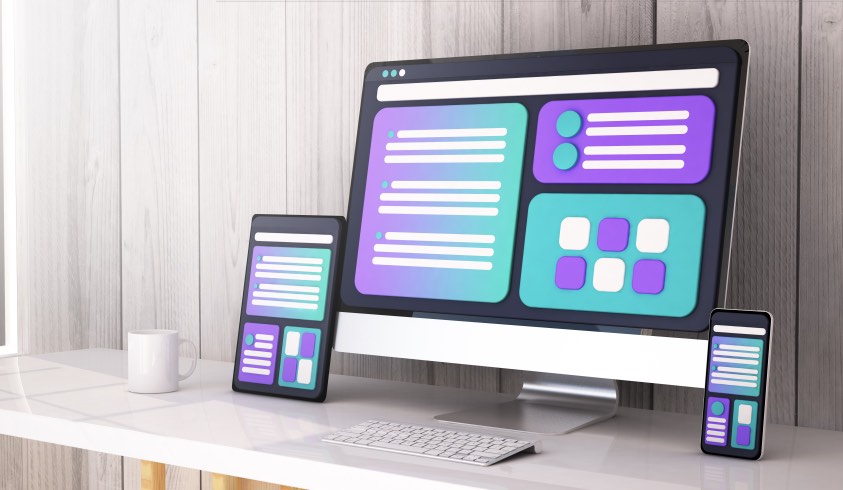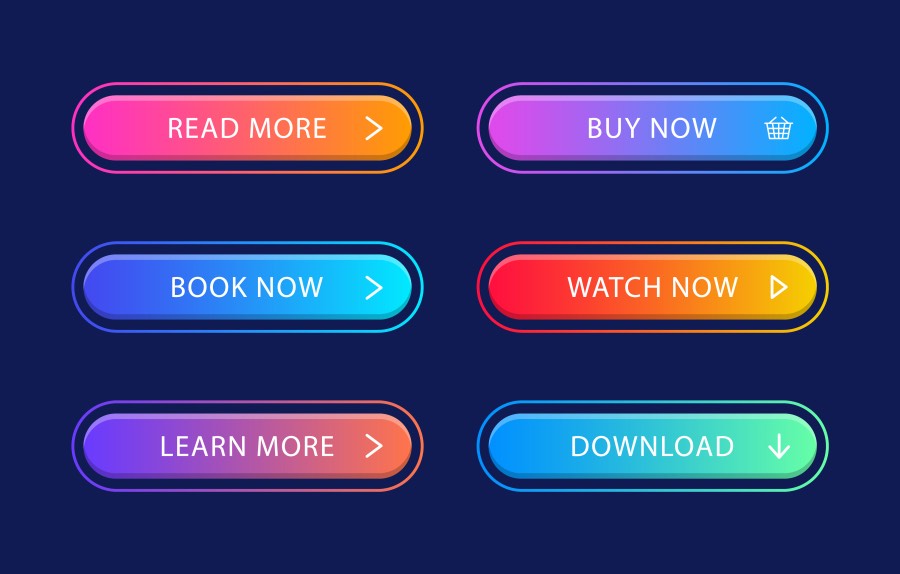Choosing between a B2B or B2C website design can be difficult. In some ways, they are very similar. But there are also some key differences that you need to keep in mind when making this decision. This post will discuss the similarities and differences between these two types of websites, so you can make the best decision for your business.
What are B2B and B2C Marketing?
Before we understand the similarities and differences between B2B and B2C websites, let’s briefly define each term.
B2B stands for business to business. In this type of marketing, businesses sell products or services to other businesses. Like most businesses, B2B companies have a website where they showcase their products or services and provide information about their company.
B2C stands for business to consumer. In this type of marketing, businesses sell products or services to consumers. The vast majority of websites you visit are B2C websites. These include sites like Amazon, Walmart, and Target.
What are the Benefits of a Website for Business?
There are many benefits of having a website for business.
Reach a larger audience
When you have a website, you can reach a much larger audience than you could if you relied on traditional marketing methods. Your potential customers are no longer limited to those who live in your immediate area. With a website, you can reach people all over the world. When you have a website, you can also reach people who might not be able to come to your store in person. Suppose you have a brick-and-mortar store that sells products or services to people in your local area. If you want to reach people outside of your immediate area, you would need to do some advertising in the surrounding areas.
Cost-effective marketing
A website can be a very cost-effective way to market your business. Traditional marketing methods, such as radio or television ads, can be expensive. With a website, you can reach many people for a fraction of the cost.
You can also update your website regularly with new content, which can help to keep your customers coming back. In the buying process, customers go through different stages: they become aware of a need, they research possible solutions, they narrow down their options, and finally, they make a purchase.
Establish trust and credibility
When you have a website, you can help to establish trust and credibility with your customers. If you have a professional-looking website, it will give your customers the impression that you are a professional business.
This can help to increase sales and encourage customer loyalty. The contact forms and live chat features on your website can also help to build trust and credibility with your customers. Many businesses make the mistake of not including a dedicated contact form on their websites, making it difficult for customers to get in touch with them. In terms of longer sales cycles, it can be difficult to establish trust and credibility with potential customers if you do not have a website.
If you are selling products or services that require a lot of thought and consideration, it is important to have a website so potential customers can learn more about your business and what you offer.
Provide customer support and service
Your website can also be used to provide customer support and service. If you’re a B2B company, your website can answer common questions about your products or services or provide customer service for existing customers.
If you’re a B2C company, your website can be used to provide customer support and service in several ways. You can use your website for FAQs, provide customer service contact information, or provide a way for customers to contact you.
Offer an online shopping experience (for e-commerce businesses)
Another benefit of having a website is that you can offer an online shopping experience for your customers. If you have an e-commerce store, your customers can browse your products and purchase them directly from your website.
Even if your target audience is businesses, they may still prefer to purchase your products or services online rather than having to call or email you. The sales team at a company may not have time to speak with a sales representative every time they need to make a purchase, so being able to do it themselves online is a huge selling point.
No matter your business model, a website can be a valuable asset for your business. If you don’t have a website, now is the time to create one.
Do you want to stand out from the competition with high-converting B2B and B2C websites?
Contact Growth Hackers
Similarities Between B2B and B2C Website Design
Now that we’ve gone over some of the benefits of having a website let’s look at some of the similarities between B2B and B2C website design.
Visually appealing
For a website to be successful, it must be visually appealing. This means the design should be simple, clean, and easy to navigate. In B2B and B2C website design, the overall aesthetic is usually similar.
The colors, font, and layout should all be cohesive and easy on the eyes. The different types of pop up contact forms or CTA’s should also be consistent throughout the website. As the sales process is different for B2B, the website should be designed in a way that is visually appealing and easy to understand for both business buyers and regular consumers. Following are some of the elements that should be taken into consideration while designing a website:
Layout
The layout of the website should be simple and easy to understand. All the important information should be prominently displayed on the home page.
Design
The design of the website should be professional and clean.
Color Scheme
The color scheme should be cohesive and easy on the eyes
Fonts
The fonts should be easy to read and consistent throughout the website.
SEO friendly
B2B and B2C websites need to be designed with SEO. This means that the website should be coded correctly, have keyword-rich content, and be easy to navigate. In order for a website to rank high in search engine results, it needs to be designed with SEO in mind.
There are a few key differences between B2B and B2C SEO, but the overall goal is to get the website to rank as high as possible.
Responsive design
In today’s world, websites need to be responsive. This means that the website should be accessible on all devices, including desktop computers, laptops, tablets, and smartphones.
With the majority of people now using mobile devices to access the internet, websites need to be designed with a responsive design. This way, users can easily access the website no matter their device. Both the B2C websites and B2B websites should be designed with a responsive design.

Differences Between B2B and B2C Website Design
Now let us take a look at some of the key differences between B2B and B2C website design.
Target audience
When it comes to B2B web design, the target audience is usually much smaller and more specific than a B2C website. This is because businesses are selling their products or services to other businesses, rather than consumers.
As a result, a B2B website’s design needs to focus on this narrower target audience. Suppose you own a company that sells software to other businesses. In this case, your website would need to be designed to be appealing and easy for business owners and decision-makers.
On the other hand, B2C web design needs to appeal to a wide range of consumers. This is because businesses sell their products or services to individuals rather than other businesses.
For example, if you own a clothing store, your website would need to be designed in a way that is appealing and easy to use for all types of consumers.
Functionality
The functionality of a B2B website is usually much more complex than a B2C website. This is because businesses need to be able to track their sales, inventory, and customers in a way that is efficient and organized. B2B websites often have to integrate with other software, such as CRM or ERP systems.
In contrast, B2C websites are generally much simpler. They need to be easy to use and navigate and usually don’t need to integrate with other software. Usually, B2B and B2C websites will have different functionality, even if they are selling the same product.
Look and feel
The look and feel of a B2B website are usually much more subdued than a B2C website. This is because businesses want to project a professional image and don’t want to come across as too salesy. The colors, fonts, and images used on a B2B website should be appropriate for the business’s industry.
B2C websites, on the other hand, are often designed to be more visually appealing. This is because businesses need to stand out in a competitive marketplace, and they want to attract customers with an appealing website design. The colors, fonts, and images used on a B2C website should be eye-catching and engaging.
Content
The content on a B2B website is usually much more complex than the content on a B2C website. This is because businesses need to provide detailed information about their products and services. The content on a B2B website should be well-written and informative.
The content on a B2C website is often simpler and more concise. This is because businesses want to appeal to a wide audience and they don’t want to overload customers with too much information. The content on a B2C website should be easy to understand and should focus on the benefits of the product or service.
Calls to action
Another difference between B2B and B2C websites is the user calls to action (CTAs). B2B websites will typically have CTAs that are geared towards getting the user to sign up for a free trial or demo of the product, whereas B2C websites will have CTAs that are more focused on getting the user to make a purchase. Also, it’s important to know that the B2B marketing KPIs to track should be different from B2C ones.
As the sales rep for a B2B company, you need to ensure that your CTA effectively gets the user to take the desired action. Even if the user doesn’t purchase your product immediately, you want to ensure that they are at least considering it.
Whether you choose B2B or B2C website design, we’re here to help!
Trust factors
The difference in the amount of trust required for a B2B vs B2C sale is significant. In B2C, people generally buy products they have used before, or that come highly recommended by friends, family, or other trusted sources. The risk is low, and the transaction is relatively simple.
In B2B, on the other hand, the products or services being purchased are often new, complex, and expensive. A team usually decides to buy of people, each with their area of expertise. Because of this, trust is a much more important factor in B2B sales.
Support
B2B and B2C websites also differ in the type of support that they offer. B2B websites typically have more detailed support pages that offer FAQs, user manuals, and other resources to help businesses use the product or service. B2B websites also often have a dedicated customer support team that can be contacted by phone or email.
B2C websites, on the other hand, typically have less detailed support pages and may only offer FAQs or a user manual. B2C websites also usually have a customer support team that can be contacted by phone or email, but they may not be as dedicated as the team for a B2B website. As the customer journey is typically shorter for B2C products and services, there is less need for in-depth support.
Pricing
Pricing is another area where B2B and B2C websites differ. B2B websites often have complex pricing structures with multiple pricing tiers, discounts, and other options. This is because B2B buyers are usually businesses that need to purchase large quantities of products or services.
B2C websites, on the other hand, usually have simpler pricing structures. This is because B2C buyers are usually individuals who only need to purchase a few items. The decision makers in B2B companies are also usually more price-sensitive than those in B2C companies.
Maintenance
Regarding website maintenance, B2B and B2C websites have different requirements. B2B websites need to be updated more frequently than B2C websites because businesses are constantly changing and evolving.
B2C websites, on the other hand, can get away with being updated less often because consumer behavior is relatively stable.
Both types of websites need to be monitored for security breaches and malware, and both types of websites need to be backed up regularly.
Overall, though, B2B websites require more maintenance than B2C websites. The website traffic patterns for B2B and B2C websites are also different.
B2B websites tend to have more consistent traffic patterns because businesses are typically open during regular business hours. B2C websites, on the other hand, can have sporadic traffic patterns because consumers can shop at any time of day or night.
Final Words on B2B vs B2C Website Design
Even though there are some key differences between B2B and B2C website design, there are also a few similarities. Both websites need to be user-friendly, informative, and visually appealing.
If you’re not sure which type of website is right for your business, it’s always a good idea to consult with a professional web design company. They’ll be able to assess your needs and create a custom website that’s perfect for your business.
Growth Hackers aims to become the best web design agency and we’re helping businesses from all over the world grow. There is no fluff with Growth Hackers. We help entrepreneurs and business owners create effective B2B and B2C website design and development, increase their productivity, generate qualified leads, optimize their conversion rate, gather and analyze data analytics, acquire and retain users and increase sales. We go further than brand awareness and exposure. We make sure that the strategies we implement move the needle so your business grow, strive and succeed. If you too want your business to reach new heights, contact Growth Hackers today so we can discuss about your brand and create a custom growth plan for you. You’re just one click away to skyrocket your business.







